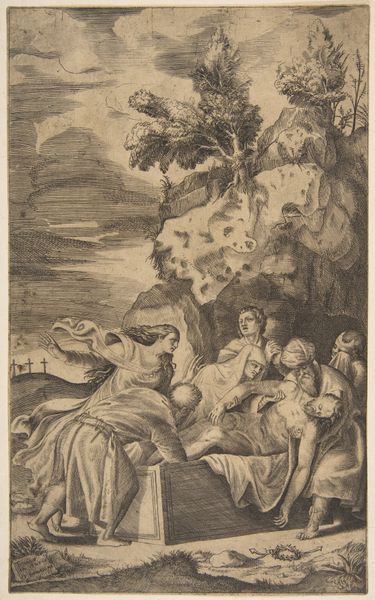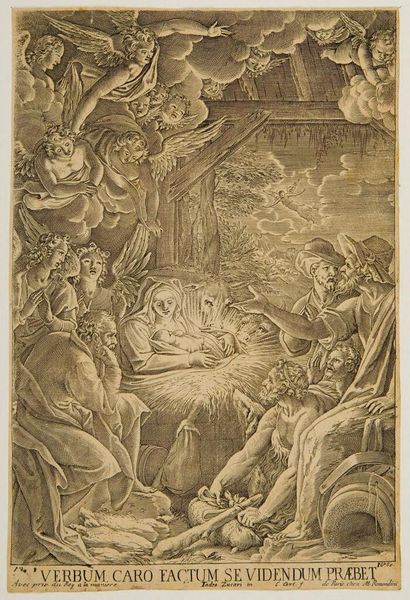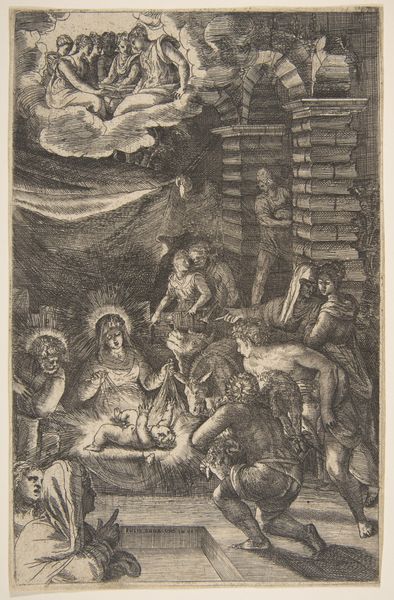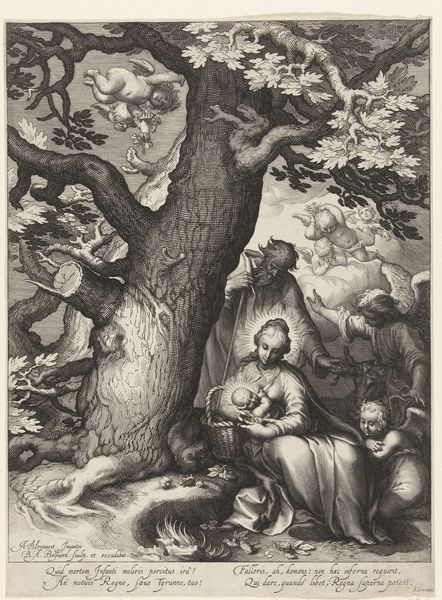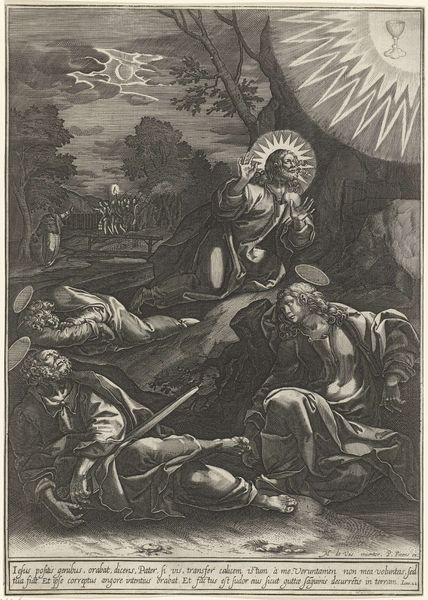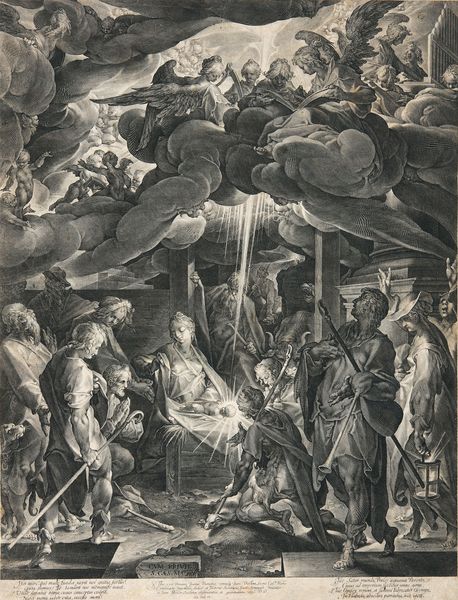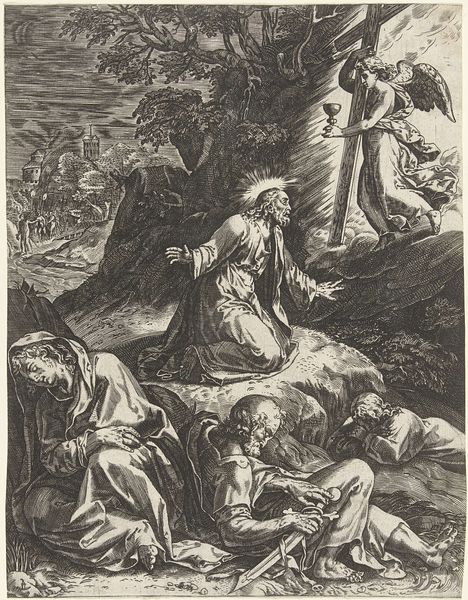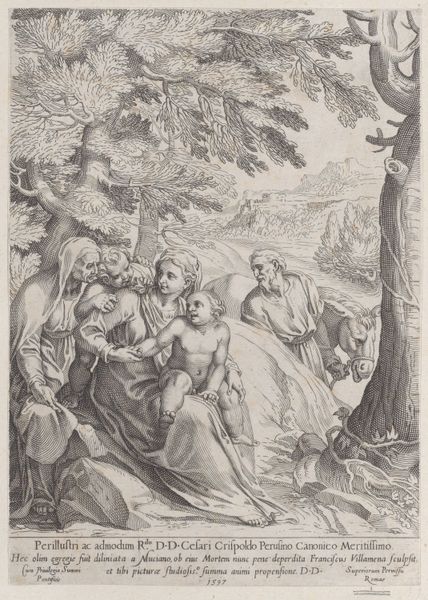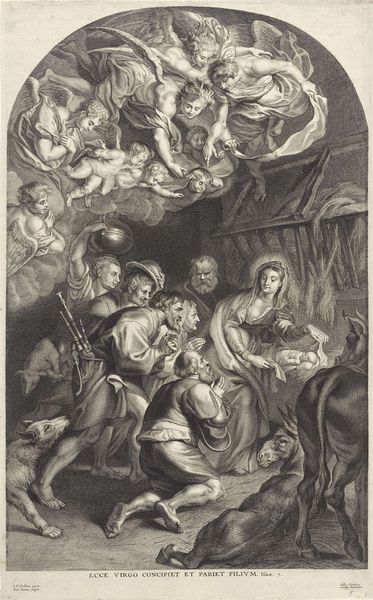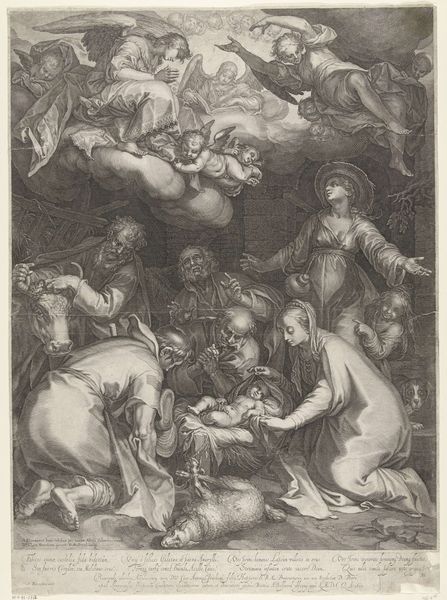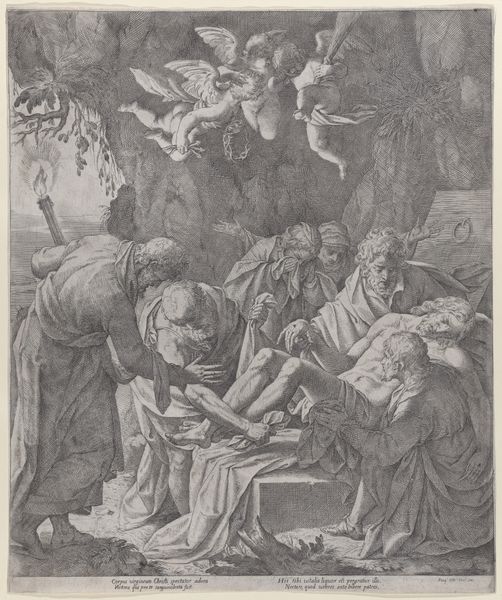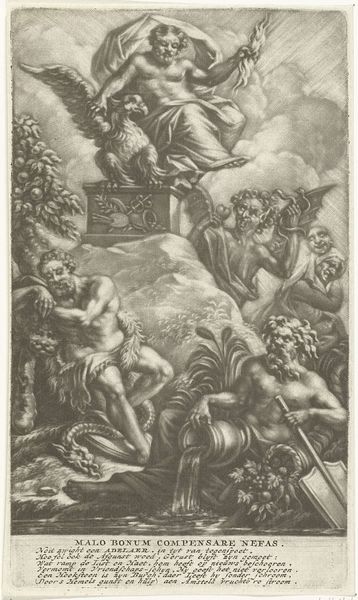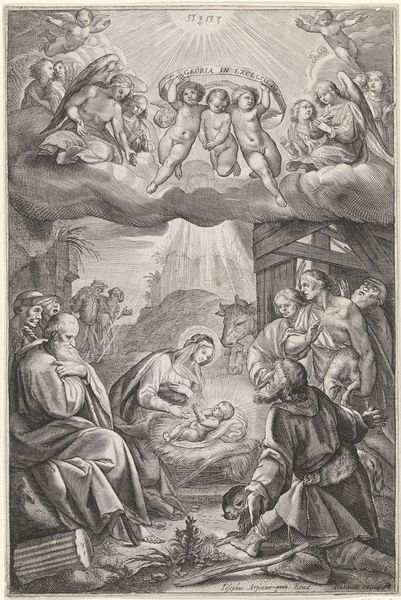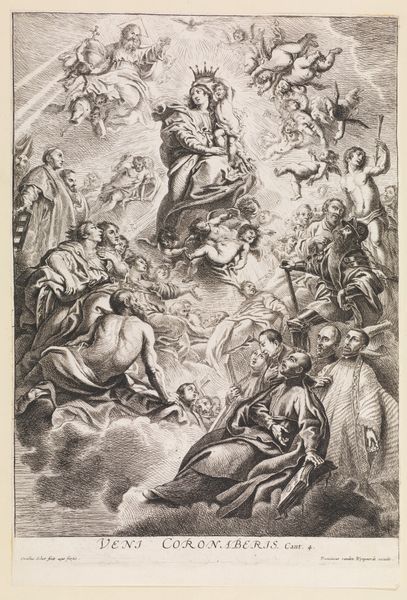
print, engraving
#
portrait
# print
#
pen illustration
#
mannerism
#
figuration
#
line
#
history-painting
#
northern-renaissance
#
engraving
Dimensions: height 302 mm, width 215 mm
Copyright: Rijks Museum: Open Domain
Editor: This engraving, "Adoration of the Shepherds," was created around 1565-1570 by Cornelis Cort. The detail is just incredible for a print! I’m immediately drawn to the almost chaotic composition, yet there's a strange harmony in the way the figures are arranged. What kind of symbolism do you see within this piece? Curator: The chaotic harmony you observe stems from a rich layering of symbols. The angels clustered above aren’t just decorative; they represent the divine sphere intersecting with the earthly. Notice how they frame the humble stable. What feeling do they evoke, hovering as they do? Editor: They seem to be actively participating in the scene, pointing, gesturing. Like messengers… Curator: Precisely! They embody communication, bridging heaven and earth. Consider the shepherds themselves, rough figures juxtaposed with the ethereal angels. What does that contrast suggest? Editor: It’s about inclusion? About this miraculous event being for everyone, regardless of their social standing. Curator: Yes! The shepherds, the earthly, the divine, all converging at this single point: the infant Christ. The radiating light surrounding Jesus and Mary isn't just visual; it's symbolic of spiritual illumination. Light dispels darkness, ignorance. What memories or associations does this light trigger for you? Think beyond the purely religious. Editor: I think of hope, definitely. And the idea of new beginnings, a shared renewal. It really hits me how powerfully visual symbols connect us to shared cultural experiences. Curator: Indeed. Cort uses these potent symbols to tap into centuries of collective memory. Understanding those symbols is key to unlocking the engraving's enduring emotional power. I’m so glad that we got a chance to study it together.
Comments
No comments
Be the first to comment and join the conversation on the ultimate creative platform.
